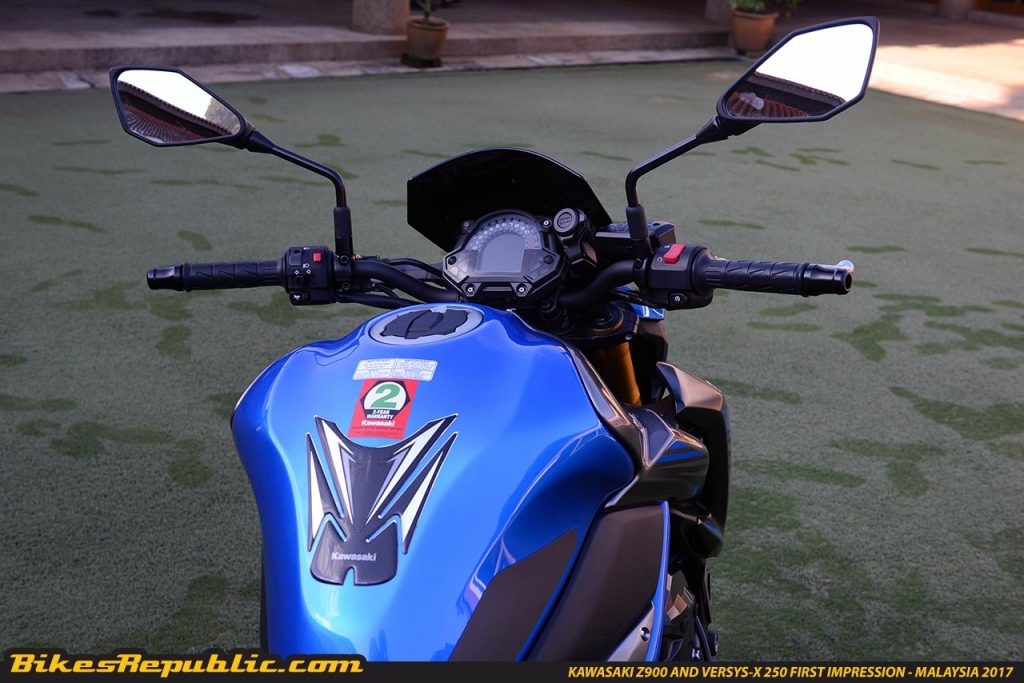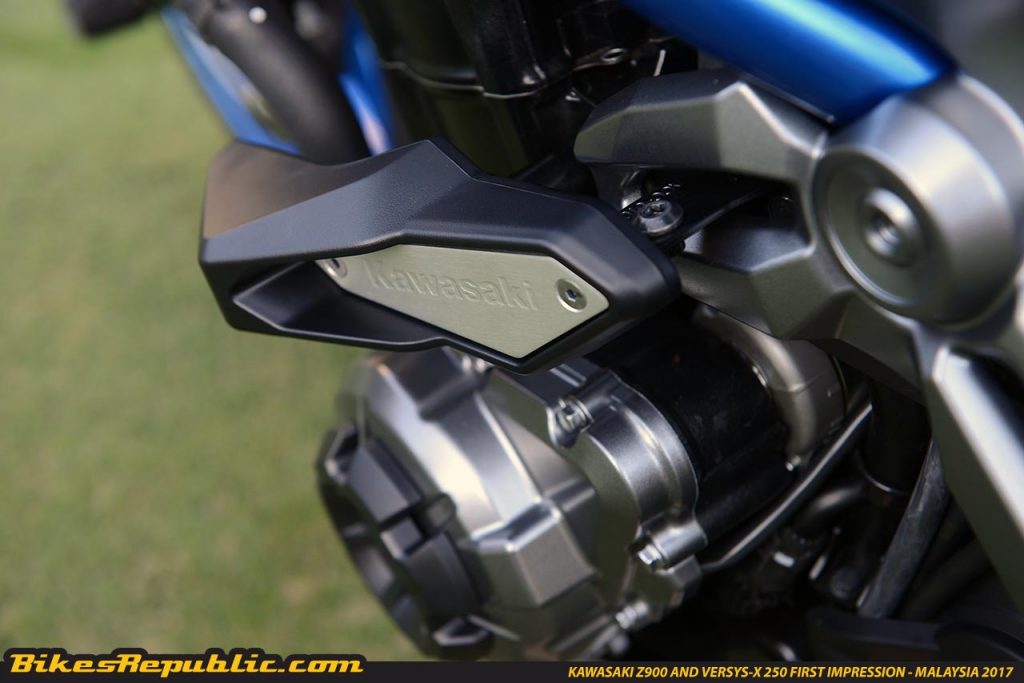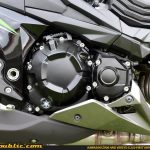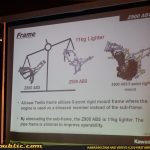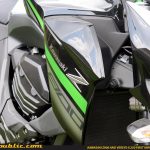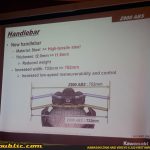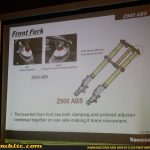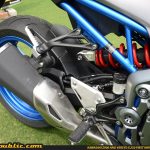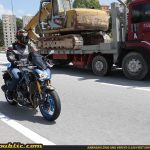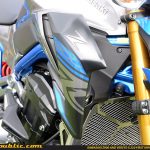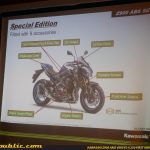- The Z900 is also a full 21 kilograms lighter than the Z800, which itself was oddly heavier than the then flagship Z1000.
- The internal upgrades include a new crankshaft that is lighter by 700 grams, lighter pistons, a new cylinder head, open deck type cylinder block and a new intake.
- Handling was predictable; the frame is designed to have as little bends and angles as possible, which then disperses stress quickly and evenly, giving the rider the most compliant ride possible.
The Kawasaki Z800 has been quite a darling among those looking for an affordable super naked motorcycle. The awesome edgy design and a smooth powerful engine made it a good bike for the daily commute to the office and to carve up mountain roads on the weekends. But it was far from perfect.
It was heavy which made simple manoeuvres like parking and u-turns feel as difficult as stacking sand bags. Most of the weight felt as if it were centred higher up at the top of the bike, making it a “top heavy” bike – easy to drop into a corner but difficult to pick up again for the next corner. Brute strength and serious muscle was needed to really wring the best out of the Z800, not to mention serious balls. It was a great bike, but needed some improvements.
And so that is exactly what Kawasaki aimed to change with the Z900. Having recently sampled it on a short 150km ride, we are pleased to tell you that the Z900 is leaps and bounds and stars and galaxies better than the Z800. It is also the de facto flagship bike now since the Z1000 is yet to be updated, if there is to be an update at all.
And just in case you were wondering, the Z900 is also a full 21 kilograms lighter than the Z800, which itself was oddly heavier than the then flagship Z1000.
21kg’ lighter does not sound like a lot, but you do feel the difference as soon as you get on the bike and turn a corner. It is more eager, more precise and a hell of a lot more manoeuvrable than the Z800. Heaving it around is a lot more manageable now too.
Making this possible is the new trellis frame that contributes the most to the weight savings. Not only does this frame weigh just 13.5 kilograms, but it also utilises five rigid mounting points, making it a stressed member of the frame, which in turn makes the Z900 a lot nippier than before.
Kawasaki also rid the bike of the subframe, a move that shaved a further 11kg’s off the total weight of the bike.
The light weight frame is further complemented by an aluminium swing arm, which shaves a further 3.3 kilograms off the total unsprung weight.
So the objective of making the Z900 a lot lighter than the Z800 was obviously achieved. But the new flagship is much more than a featherweight boxer, it packs a mighty punch too.
The 948cc, liquid-cooled four-stroke, inline-four-cyllinder is the other major improvement to the Z. The engine was designed to be quick-revving with most of the power stored at the mid and high-rev range.
Of course, power is up from the Z800 and now stands at 123.6hp (a 12.6hp increase from the Z800) and 98.6Nm of torque (a 15.6Nm increase), but because the engine is more rev happy than before, a lot more of that power is accessible much sooner, giving the Z900 some serious pulling power through all six gears.
The engine has a number of internal modifications that help it achieve its livelier character, the internal upgrades include a new crankshaft that is lighter by 700 grams, lighter pistons, a new cylinder head, open deck type cylinder block and a new intake.
But the engine is not the only thing that has been updated, the gearbox too is all-new. The ratios have been completely reworked for shorter ratios and this contributes to the wild acceleration and explains why the Z900 is so rowdy in the first and second gear.
In fact, slicing through traffic was best done in fourth or fifth gear, any lower and it is simply too eager to burst open, but on the highway, the zippy character was brilliant. Power was constantly available in all gears, even in sixth gear it will continue to accelerate towards the 11,000rpm red line. If it is constant power you want, the Z900 has miles and miles of that.
Handling was predictable; the frame is designed to have as little bends and angles as possible, which then disperses stress quickly and evenly, giving the rider the most compliant ride possible. The suspension was at factory setting, and it did feel a tad soft and lumpy in the bends, but both front and rear suspensions are adjustable.
The rebound and compression of the front suspension can be adjustable via a single control on the left fork, where previously you had to adjust both forks separately, risking an imbalanced set up. The rear suspension has been redesigned and now utilises a near horizontally mounted shock that is connected to a linkage system, which in turn is connected to a lighter, stiffer swing arm. The entire rear suspension is arranged in such a way that the weight of the bike and rider is centralised, eliminating the “top-heavy” feel of the Z800. The spring is adjustable for preload by 5.5 inches.
The new engine, gearbox and suspension gives the Z900 a lot more confidence than its predecessor. You can push this bike harder than before and it has what it takes to cope with all you can ask of it. It is lighter and more willing, which means you can carry mega speeds in corners. The combination of the engine together with the slick shifting gearbox ensures you are never starved of power, that I can personally testify to since this bike will still pull when you’re well into the rev-band of the sixth gear.
And just in case you run out of talent and approach a corner too hot, there is a new slipper clutch with assist function that ensures the rear tyre doesn’t lock up as you bang down the gears in a desperate attempt at using engine braking to slow you down. The clutch assist function makes the clutch lever extremely light, about 40-50% lighter according to personal estimates.
Kawasaki was obviously very serious about creating the best super naked in its price category, and it has come really close to doing it. Just incase the increase in power and diet program wasn’t enough, the company even carefully crafted an audible intake sound at about 6,000rpm where the Z900 sounds like it is sucking in some serious air, just like a sprint runner would at full flight.
The intake funnels are of varying length (50mm for the outer pair and 150mm for the inner pair) and this offers a balance of performance and intake sound. The longer inner pair contribute towards the low-mid rpm performance, while the shorter outer pair are the ones creating the whooshing intake sound.
On a personal note, the Z900 is very near perfect but for a guy of my height and size, the package is let down by the Malaysian-spec bike’s low seat height arrangement which made the bike feel too cramped.
It was not very comfortable even when sitting at the edge of the seat and resting on the balls of my feet – in the so called full race mode. I’m about six-foot tall and I could not find a comfortable position on the Z900 sadly. But with such a brilliant all-round package, maybe an aftermarket seat and foot pegs relocaters will do the trick.
The Kawasaki Z900 is an altogether different animal to the Z800 it replaces, sporting a totally different character but an obvious evolution to the older bike. Priced at just RM50,959, the Z900 seems to have it all. We’ll be spending more time with it soon, so watch this space. Meanwhile, just a note to Z800 owners, it is time to think of trading up, the 900 is really the bike to have now.






















